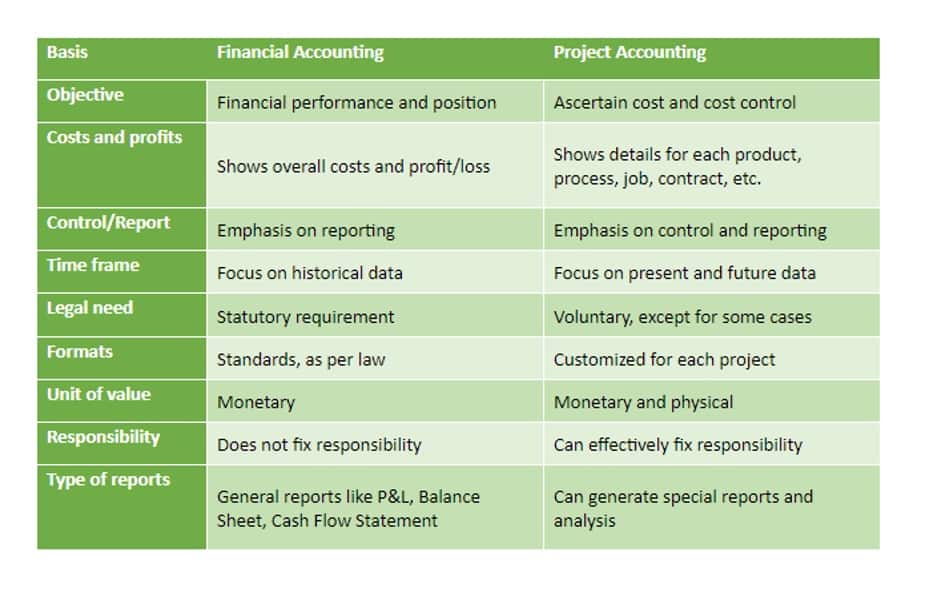
At a minimum, your chart of accounts should include an account number and name for each account. However, it’s generally accepted as a best practice to include a brief explanation of the purpose of each account too. There are many different ways you can format your chart of accounts, basically allowing you to pick and choose from different pieces that you can include.

Leveraging Technology: Software Solutions for COA Management
- Each of the accounts in the chart of accounts corresponds to the two main financial statements, i.e., the balance sheet and income statement.
- Remember, a COA should make it easier to understand your business’s financials, not harder.
- A chart of accounts has accounts from the balance sheet and income statement and feeds into both of these accounts.
- If you need to edit a nominal code, check to see if the transaction has already been posted and if it will cause any problems with the previous transactions.
- An expense account balance, for example, shows how much money has been spent to operate your business, whereas a liabilities account balance shows how much money your business still owes.
Yes, we understand we’re venturing into Accounting 101 territory here, stopping just short of a refreshing dip into the magical world of debits, credits, and double-entry bookkeeping. As a matter of fact, this high-level review provides a perfect segue into our next topic. Keep your COA as concise as possible without sacrificing essential detail, and you’ll create a map that reliably guides you through your financial landscape. From there, you’ll choose the specific account numbers you use for each account. This one forgoes that information but signals which financial report the account is likely to be featured in.

SaaS CFOs: Supercharge Financial Reporting with Workiva (Beyond SEC Compliance)
This content is presented “as is,” and is not intended to provide tax, legal or financial advice. However, having at least a reasonable understanding of how common statements work and the insights they offer is an important skill to master. At the end of the year, review all of your accounts and see if there’s an opportunity for consolidation. Here’s how to categorize transactions in QuickBooks Online and navigate the COA. He joined NerdWallet in Accounts Payable Management 2019 as a student loans writer, serving as an authority on that topic after spending more than a decade at student loan guarantor American Student Assistance.
Browse More Templates On Chart of Accounts

A chart of accounts (COA) serves as an essential framework for managing financial information. It organizes your business’s financial transactions into categories, making it easier to track and analyze data. A chart of accounts is a catalog of account names used to categorize transactions and keep your business’s financial history organized. There’s often an option to view all the transactions within a particular account, too. A Chart of Accounts is an organized list of all the accounts in a company’s general ledger, systematically used for recording transactions.
Deduction Management
- A chart of accounts (COA) serves as an essential framework for managing financial information.
- All of those financial transactions generating operating revenue for your company fall into the P&L (income statement) category.
- Sales are reported in the accounting period in which title to the merchandise was transferred from the seller to the buyer.
- Just remember, this only includes revenues stemming from the core functions of your business, not items falling outside of your main activities.
- This list will usually also include a short description of each account and a unique identification code number.
- The trial balance lists all the accounts and the debits and credits related to them.
A chart of accounts is a list of cash flow all your company’s accounts together in one place. It provides you with a birds-eye view of every area of your business that spends or makes money. The primary account types include revenue, expenses, assets, liabilities, and equity.
- They represent what’s left of the business after you subtract all your company’s liabilities from its assets.
- Even for a small business, however, more digits allow the flexibility to add new accounts as the business grows in the future, while maintaining the logical order of the coding system.
- Separating expenditures, revenue, assets, and liabilities helps to achieve this and ensures that financial statements are in compliance with reporting standards.
- As such, it’s essential to have a clear understanding of the company’s financial transactions and how they should be classified.
- Obviously, that makes your chart of accounts essential to a host of different people and groups, from your decision-makers and stakeholders to potential investors and lenders.
- Small business owners are often tasked with wearing multiple hats, and their COA should reflect the versatility and adaptability required.
Add financial statements
Uniform Chart of Accounts deals with the financial transactions of the public school report. This Uniform Chart of Accounts Sample template can be used to develop the framework of the required document. A Church is also maintained by an organization, therefore it also has bank accounts for a different purpose statement. You can use this Church Chart of Accounts Template for maintaining the chart for the church’s bank accounts. The best part of this template is that it has been designed for the church.

Basic Structure of Chart of Accounts

My Accounting Course is a world-class educational resource developed by experts to simplify accounting, finance, & investment analysis chart of accounts example topics, so students and professionals can learn and propel their careers.
